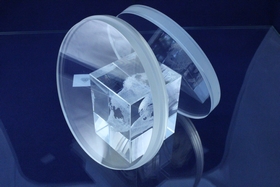
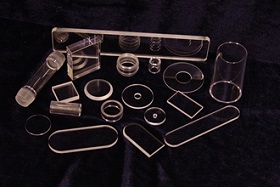
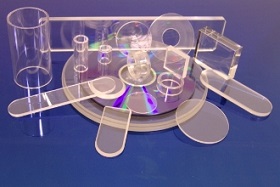
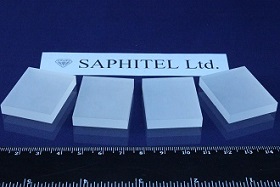
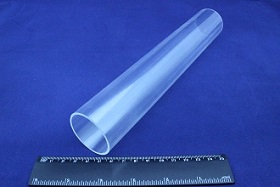
Saphitel Ltd. offers for the customers a wide range of sapphire products grown by EFG and Kyropoulos methods
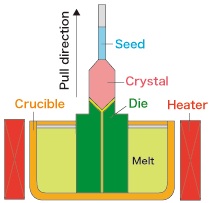
The EFG crystal growing technique remains the main method of synthetic sapphire manufacturing. Alumina is melted in a crucible, and the melt 'wets' the surface of die and moves up by capillary attraction. A sapphire seed of specific crystallinity is dipped into the melt on top of the die and drawn out – solidifying into sapphire in the shape of the die – typically a tube, rod or ribbon. The process also allows for tight control over crystal orientation. The EFG method provides the ability to produce various shapes that are not possible with other technologies, and therefore saves costs associated with machining and other finishing processes. EFG-produced crystal material is typically of low to medium optical quality, and can be precisely produced in different crystallographic orientations. It is most often used for mechanical, industrial and optical applications.
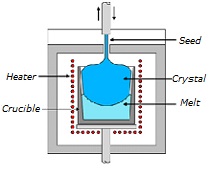
In the Kyropoulos method, pure alumina powder is placed in a crucible and brought to melting temperature. The sapphire crystal is formed deep under the surface of the molten alumina ‘melt.' As it solidifies, it takes on the cylindrical shape of the crucible. Thermal gradient controls the process so that only the crystal layer at the solid-liquid interface remains molten, and as the seed crystal is slowly drawn back out of the the added crystal layers increase the size of the boule. This growth technique is ideal for materials with low thermal conductivity and a high degree of thermal expansion, the combination of which can make crystal material vulnerable to various imperfections unless grown and cooled in a low-stress environment. With this highly controlled thermal-gradient, the Kyropoulos method yields large-diameter boules of very high optical quality due to its high purity. The resulting boules can be cut to any crystallographic orientation or plane. Kyropolous grown sapphire is ideal for many optical applications including electronics (substrates, IR detectors, fiber-optic lenses), optics (windows, lenses, probes, lasers), and manufacturing.